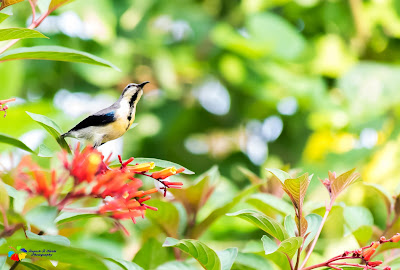After understanding some of the basic concepts of
photography, now you are ready to go out and practice on yourself, but still
some of the things are still there that need some attention like white balance.
White balance plays a very important role. To understand
white balance first we need to understand the light condition. The different
types of light affect the color of an object. That light could be daylight, overcast
skies
or indoors - incandescent or fluorescent light. But digital cameras need
to set this, to compensate for different types of lighting and to give a white
object white effect.
We can simply set auto white balance and the camera automatically
set the scene's color temperature - it
is measured in kelvin and choose a setting from its pre programmed collection.
Apart this we can manually set the White Balance. Those
settings are incandescent, fluorescent, flash, cloudy, open shade, sunny,
Kelvin color temperature and PRE.
Auto - It automatically adjusts the different lighting
conditions, well we do have other modes also and try with them according to
lighting condition.
The Incandescent
setting is used in household bulbs;
Fluorescent
will produce blue color to photos taken in fluorescent light;
Cloudy
will add a bit of warmth to the light;
Flash in
addition creates a more warmth to the light;
Open
Shade adds a slight pink tone and
Sunny 5000 degrees Kelvin, which is
equal to mid-day sun.
Then there's the Kelvin
Color Temperature setting. It's a do-it-yourself choice, Using the Kelvin
setting you can set accurately or can
change as per your choice of the scene's
mood. You can check the result of your specific Kelvin color temperature
choices in LCD screen of camera.
Finally, you can choose PRE, this is also called "white
card" setting. With this option, you have to hold a white card in front of
the lens and press the shutter button. The camera will lock in the color
temperature of the light reflected from that card, and becomes the standard for
the camera's white balance setting. PRE is suitable for mixed lighting.
White balance is in our hand,
it gives total control over you and you can set as per the scene or mood or
feeling and make it work for you. This is also possible to work out this
setting in editing software. We can see these settings through live view in
DSLR's and simply in LCD screen of compact cameras.
Here I am sharing some clicks with you. The first photo is with auto white balance setting with flash, the second one is auto white balance without flash and the last photo is with cloudy white balance setting.
 |
| Taken with Nikon D5500, lens 55-200mm, Shutter Speed -1/500, Aperture - 5.6 & ISO - 3200 |
If you keep the white balance according to your own setting then it reduces your later labour, you should have knowledge of color temperature and through this you can also give the desired effect to your photography.
 |
| Taken with Nikon D5500, lens 55-200mm, Shutter Speed -1/800, Aperture - 5.6 & ISO - 320 |
Here we can see that when we adjusted the white balance how it created a warm color temperature to the image and it gives totally a different and interesting look. This is how we can bring out some warmth in our photos and it helps us to make our photo all the more interesting and attractive.
 |
| Taken with Nikon D5500, lens 55-200mm, Shutter Speed -1/800, Aperture - 5.6 & ISO - 320 |
If you wish to learn then it is a best practice to keep adjusting white balance according to the scenario and if you are confused which setting to be kept then there is no problem in keeping auto white balance but try hard to keep white balance setting manually, sometimes you may be in a rush at that also there is no harm in keeping the auto white balance.
Whatever I had to clarify I tried my level best and if you also wants to add something or say something from your own experience your comments are welcome.











0 comments:
Post a Comment